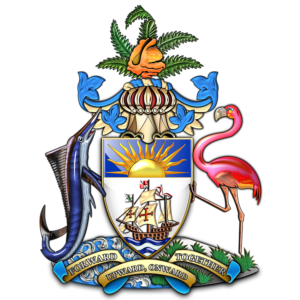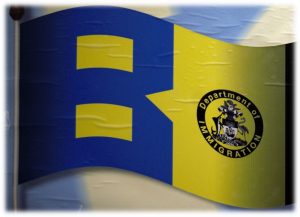History of the Bahamas Department of Immigration
 History of the Bahamas Department of Immigration
History of the Bahamas Department of Immigration
Cambridge dictionary gives the economic definition of migration as, “the process of a person or people travelling to a new place or country, usually in order to find work and live there temporarily or permanently.” Accordingly, the derivative words emigrate (to leave your country) and immigrate (to enter a foreign country) respectively denote the direction of the migration.
The Bahamas and the surrounding region of The Americas and Caribbean share a rich history of immigration and emigration which continues to manifest in the form of tourism, cultural diaspora, economic migration and the like. In The Bahamas (former British colony), the Governor-in-Council of the day passed the Law of Emigrating in 1920 to monitor and control such movements. This law was eventually followed by the 1928 Act, to formally establish the post of Immigration Officer. Under this Act, the Immigration Officer of New Providence and Commissioners in their respective out island districts were authorized to administer the laws dealing with the grant/refusal of leave to land and the deportation of foreign nationals. However, the ultimate control on Immigration matters during this period remained with the Governor-in-Council for the colonies.
George Campbell Roberts was appointed Acting Immigration Officer until the appointment of John Anfield Hughes as Immigration Officer on 15th February, 1938. His confirmation to this post meant that two distinct ranks were now in effect. There were Immigration Officer and Assistant Immigration Officer.
On 1st January, 1939, an Act regulating Immigration was passed in Parliament establishing the Bahamas Immigration Department. The administration of the Department then was the responsibility of the Colonial Secretary of His Majesty’s Government, England, through a small staff of approximately twelve persons. The appointed Immigration Officers were;
John Anfield Hughes
Philip Strong Brice
Hersal W. Stuart Hall
On 6th January 1964, on secondment from the Police Department Wenzel Vernon Granger was appointed Chief Immigration Officer, this effectively introduced a third and more senior rank to the prevailing structure. In 1967, with the arrival of majority rule, a newly elected government passed a bill to enact the Immigration Act that same year. This Act essentially focused on the control of admittance, employment, movement and residence of persons within the Bahama Islands who were neither citizens nor Permanent Residents.
Over the years, various areas the Immigration Act have been amended to enable the Department to effect its mandate of supervision and control. A more recent and notable inclusion to the Department’s mandate of control is The Bahamas Immigration Detention Centre, the former Carmichael Road Primary School, this entity serves as a transitory holding facility until repatriation arrangements are made for detainees.
The Immigration Act and Amendments
In 1967, with the arrival of majority rule, a newly elected government passed a Bill to enact the Immigration Act 1967. This Act essentially focused on the control, admittance, employment, movement and residence of persons within the Bahama Islands who were neither citizens nor belongers.
The 1967 Act was revised in 1975 and this revision established The Immigration Board. The Immigration Board consists of persons holding office as Cabinet Ministers. The Prime Minister is the Chief Executive Officer of the Board. However, this duty is generally exercised by the Minister with responsibility for Immigration. The functions of the Board are to exercise general supervision and control over matters concerning or connected with the entry of persons into the Bahamas, and the residence and occupation of persons who are not citizens of The Bahamas or permanent residents.
Various amendments to the Immigration Act have served to enable the Department to effectively carry out its mandate of supervision and control. As a result of one of these amendments came the establishment of the Detention Center.
More recently in 2015 there were a series of amendments that reflected the following;
– The establishment of the Immigration Reserves and provision for the enlistment, promotion, dismissal powers and duties of reservists.
– The establishment of the Resident Belongers Permit
– Mandate for the formulation, implementation and publication by the Minister of a sector policy, effective upon publication, in relation to IMMIGRATION (AMENDMENT) BILL, 2015’
– The exercising of Ministerial discretion with respect to residence and employment matters in The Bahamas under Part VI of the Act.
– Authorizing the Minister of Immigration to make regulations establishing a Detention Center for persons pending deportation at one or more locations within The Bahamas.
– To make provision for the grant of a Certificate of Permanent Residence to the foreign spouse of a Bahamian who is widowed, divorced or separated after applying for the certificate.
Establishment of the Bahamas Immigration Flag
The Immigration Department unveiled its Departmental Flag on October 15, 1991.
 The Immigration Flag is the creation of Chief Immigration Officer Philip V. L. Gomez. It has three unequal stripes from hoist to fly black gold and aquamarine; bearing two gold billets on the aquamarine.
The Immigration Flag is the creation of Chief Immigration Officer Philip V. L. Gomez. It has three unequal stripes from hoist to fly black gold and aquamarine; bearing two gold billets on the aquamarine.
The flag also recalls the “Banner of the Kingdom of the XV Islands”, which Spain created around 1496 to symbolize the area that is now The Bahamas.
Consequently, during the 1991 unveiling, then Minister Alfred Maycock articulated his hope that the dedication service would mark the beginning of a special blessing from the ‘Almighty God’ to be bestowed upon the Immigration Officers and that God would protect them against destruction.
